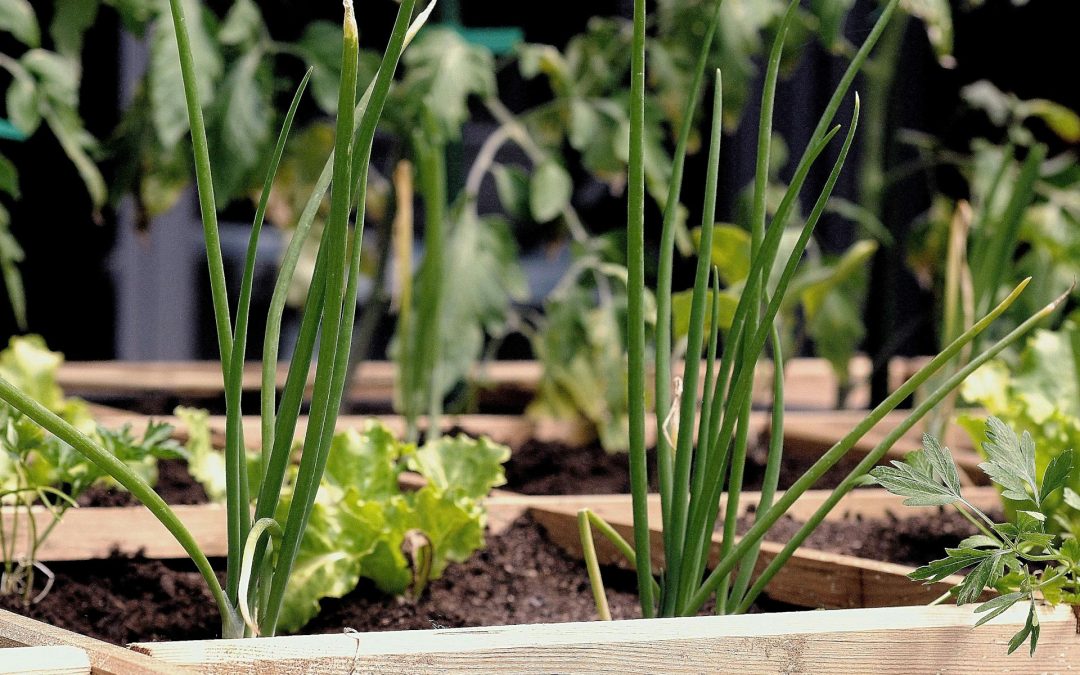Are you interested in growing your own food in Champaign-Urbana? Do you want to enjoy fresh, organic and healthy produce without spending a fortune? If so, you might want to try urban gardening.
Urban gardening is the practice of cultivating, processing and distributing food in or around urban areas. It can be done in various ways, such as using containers, raised beds, vertical gardens, rooftop gardens, community gardens and more. In this blog post, we will share some tips for growing an urban garden in your Champaign home.
Tip #1: Choose the right location
One of the most important factors for a successful urban garden is finding a suitable location. You need to consider the amount of sunlight, water, wind, and space available for your plants.
Ideally, you want a spot that receives at least six hours of direct sunlight per day, has access to a water source, is protected from strong winds and pests, and has enough room for your containers or beds. You can use balconies, patios, windowsills, rooftops, or any other space that meets these criteria. If you don’t have any private space, you can also join a community garden or rent a plot from a local organization.
Tip #2: Choose the right plants
Another key factor for a successful urban garden is choosing the right plants for your climate and space. You need to consider the hardiness zone, the growing season, and the size of your plants. Champaign is located in USDA hardiness zone 6a, which means that the average annual minimum temperature is between -10°F and -5°F. This means that you can grow a variety of plants that can tolerate cold weather, such as kale, spinach, lettuce, carrots, radishes, garlic and onions. You can also grow some warm-season crops that need more heat and longer days, such as tomatoes, peppers, cucumbers and beans. However, you will need to start them indoors or use a greenhouse or cold frame to extend the growing season.
You also need to choose plants that fit your space and containers. For example, if you have a small balcony or windowsill, you can grow herbs, salad greens, strawberries or cherry tomatoes in pots or hanging baskets. If you have a larger space or raised bed, you can grow larger plants like squash, zucchini or eggplant.
Tip #3: Choose the right containers and soil
Another essential factor for a successful urban garden is choosing the right containers and soil for your plants. You need to consider the drainage, weight and durability of your containers and the quality, fertility and pH of your soil. You can use any type of container that has holes at the bottom for drainage, such as plastic pots, metal buckets, wooden crates or even recycled materials like milk jugs or soda bottles. However, you need to make sure that they are sturdy enough to hold the soil and plants and light enough to move around if needed.
You also need to use good quality potting soil that is rich in organic matter and nutrients and has a pH level between 6.0 and 7.0. You can buy ready-made potting mix from a garden center or make your own by mixing compost, peat moss, perlite and vermiculite.
Tip #4: Water and fertilize regularly
Another vital factor for a successful urban garden is watering and fertilizing your plants regularly. You need to consider the water needs, frequency and timing of your plants and the type, amount and timing of your fertilizer. You need to water your plants when the top inch of soil feels dry to the touch, but not too much that it causes waterlogging or root rot.
You also need to water your plants early in the morning or late in the evening to avoid evaporation and sunburn. You need to fertilize your plants every two weeks during the growing season with an organic fertilizer that is appropriate for your plants. For example, you can use fish emulsion for leafy greens, seaweed extract for flowers and fruits or compost tea for all-purpose.
Tip #5: Harvest and enjoy
The final factor for a successful urban garden is harvesting and enjoying your produce. You need to consider the best time, method and storage of your harvest and the ways to use it in your meals. You need to harvest your produce when it is ripe, fresh and tender, but not overripe or spoiled.
You also need to harvest your produce carefully by using scissors or a knife to cut it off without damaging the plant or leaving any diseases or pests behind. You need to store your produce properly by washing it gently with water and drying it with paper towels or a salad spinner.
You can then store it in plastic bags or containers in the refrigerator or freezer depending on the type of produce. You can also preserve it by canning, drying or pickling it for later use.
Urban gardening is a fun, rewarding and sustainable way to grow your own food in the city. It can also improve your health, save you money and reduce your environmental impact. So, what are you waiting for? Grab your tools, seeds and soil and get gardening!
Are you currently looking to purchase a home? My Perfect Homefinder Program is just what you need! I can find homes not only listed on the market but unlisted ones as well…giving you the first chance to see and make an offer on what could be the HOME OF YOUR DREAMS! Want to learn more? Call, text, or email me at your convenience.
217-202-8843
[email protected]
www.champaignrose.com

